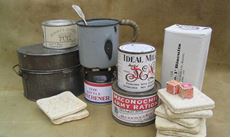
Food for the Troops
A total of 3,240,948 tons of food was sent from Britain to the soldiers fighting in France and Belgium during the First World War. The British Army employed 300,000 field workers to cook and supply the food. At the beginning of the war, British soldiers were given 10 ounces of meat and 8 ounces of vegetables a day. As the size of the army grew and the German blockade became more effective, the army could not maintain these rations and by 1916 this had been cut to 6 ounces of meat a day. Later troops not in the front-line only received meat on nine out of every thirty days. The daily bread ration was also cut in April 1917. The British Army attempted to give the soldiers the 3,574 calories a day that dieticians said they needed. However, others argued that soldiers during wartime need much more than this.
Soldiers in the Western Front were very critical of the quantity and the quality of food they received. The bulk of their diet in the trenches was bully beef (canned corned beef), bread and biscuits. By the winter of 1916 flour was in such short supply that bread was being made with dried ground turnips. The main food was now a pea-soup with a few lumps of horsemeat. Kitchen staff became more and more dependent on local vegetables and also had to use weeds such as nettles in soups and stews.
The battalion’s kitchen staff had just two large vats, in which everything was prepared. As a result, everything the men ate tasted of something else. For example, soldiers often complained that their tea tasted of vegetables. Providing fresh food was also very difficult. It has been estimated that it took up to eight days before bread reached the front-line and so it was invariably stale. So also were the biscuits and the soldiers attempted to solve this problem by breaking them up, adding potatoes, onions, sultanas or whatever was available, and boiling the mixture up in a sandbag.


The catering staff put the food in dixies (cooking pots), petrol cans or old jam jars and carried it up the communication trenches in straw-lined boxes. By the time the food reached the front-line, it was always cold. Eventually, the army moved the field kitchens closer to the front-line but they were never able to get close enough to provide regular hot food for the men. Sometimes a small group of soldiers managed to buy a small primus stove between them. When they could obtain the fuel, which was always in short supply, they could heat their food and brew some tea.
The standard Army ration pack, containing identical food for every soldier, was not introduced until after the conflict. Men carried emergency “iron rations” in a tin and in 1914 the war department set out its aims for feeding troops.
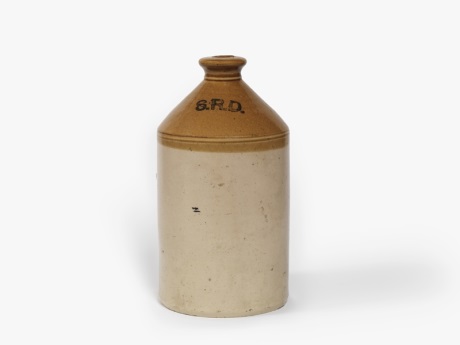
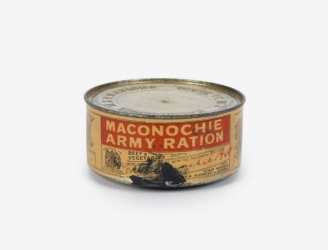
These allowances, supposedly per person per day, were: 1¼lb fresh or frozen meat, or 1lb salt meat; 4oz bacon; 20oz of bread or 16oz of flour or 4oz of oatmeal; 3oz of cheese; 4oz of butter or margarine; 4oz of tea, 4oz of jam or 4oz of dried fruit; pinch of pepper; pinch of mustard; 8oz of fresh vegetables or a tenth of a gill lime juice; half a gill of rum or 1pt of porter; maximum of 2oz of tobacco.
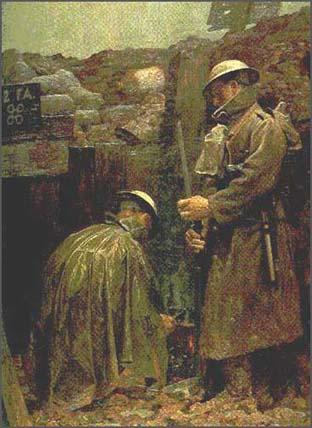
Feeding the Troops
Gilbert Rogers painted this picture of two stretcher-bearers trying to prepare
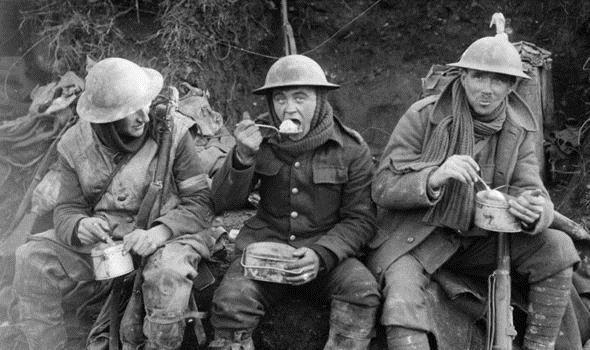
British soldiers eat hot rations in the Ancre Valley during the Battle of the Somme
British troops receive dinner rations from field kitchens in the Ancre area of the Somme, October 1916
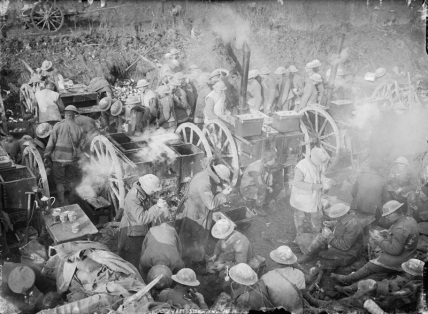

British troops eat their Christmas dinner in a shell hole at Beaumont Hamel on the Somme 1916
Stew is served at the edge of a reserve trench near St Pierre Division on the Somme, November 1916

